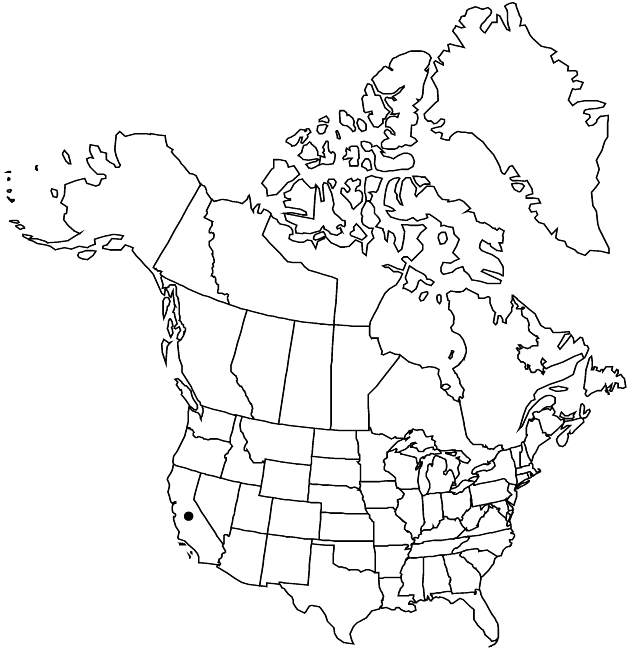Hesperevax acaulis var. ambusticola
Syst. Bot. 17: 306, fig. 5A–L. 1992.
Plants 0.5–2(–4) cm. Stems (0–)4–10, ± prostrate (in depauperate plants sometimes 0, or 1, erect, unbranched); branches proximal and/or distal. Leaves cauline, petiolate, largest mostly 4–7 × 1–2 mm; petiole lengths mostly 0.5–1.5 times blade lengths; blades obovate to ± round, obtuse; capitular leaves mostly distally spreading. Heads usually borne singly, largest 2–2.5 × 1.5–2 mm. Receptacles 1–1.4 × 0.8–1.1 mm. Pistillate paleae in 3–4 series, 1.7–2.5 mm. Staminate paleae: longest 1.6–2 mm. Functionally staminate florets 2–5(–9); corollas 0.6–0.8 mm. Cypselae mostly 0.8–1 mm.
Phenology: Flowering and fruiting mostly Apr–early Jun.
Habitat: Dry or vernally moist slopes, relatively barren or in clearings, recent chaparral burns
Elevation: 200–1300 m
Discussion
Variety ambusticola is known from mountains of western Riverside County to the San Francisco Bay area and northern Sierra Nevada foothills. It occurs at about the same elevations as, and intergrades extensively with, var. robustior in northern California (J. D. Morefield 1992c).
Depauperate individuals of var. ambusticola are among the smaller and more inconspicuous Compositae, sometimes consisting of just one grayish head embedded in a leaf rosette on a root 1–2 cm long.
Selected References
None.
